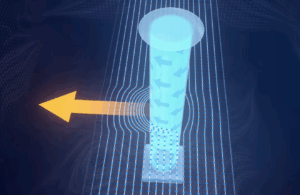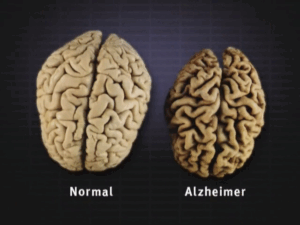What is DBS and is it a cure for Parkinson’s disease?
What if the simple act of reaching for a cup became a monumental challenge? For millions with Parkinson’s disease, this struggle is a daily reality. Parkinson’s disease is an age-related neurodegenerative brain disorder. It affects nearly 10,000,000 people worldwide and every year, 90,000 more people are diagnosed with the disease in the United States (1). Parkinson’s causes the basal ganglia, a group of nuclei responsible for controlling muscle movement, to deteriorate over time as nerve cells lose the ability to produce neurotransmitters to connect with the rest of the brain and body (2). This decline causes an insufficient supply of dopamine, a neurotransmitter essential for generating movement. The body is unable to correctly carry out the activation signals that tell muscles to move, leading many Parkinson’s patients to experience slowed movements and tremors (3). As the disease progresses, these symptoms intensify and expand to affect other brain functions that can lead to cognitive changes, depression, and psychosis (4).
Most treatments used for Parkinson’s utilize levodopa, a natural chemical that turns into dopamine and/or dopamine agonists that mimic the hormone’s effects (4). The problem with these medicines is the risk of dyskinesia and the benefits of medicine wearing off over time. These conditions cause patients to experience uncontrolled, involuntary movements and cause symptoms to resurface. (2) As a result, many people revert to surgical treatments such as deep brain stimulation (DBS). DBS is an FDA-approved treatment for Parkison’s, epilepsy, and essential tremor, but is also used to treat psychological conditions such as dementia, depression, and OCD (5). As of now, more than 160,000 people have had this procedure.
The brain works through electrical signals: neurons, the cells that make up the brain, communicate with each other via electrical impulses (4). DBS intervenes between the electrical nerve signals that are misfiring, essentially resetting the brain’s firing of the electrical impulses; the metal rods from the device, leads, fire safe electrical signals around the brain to make the correct connections (5).
First, patients need to be approved as a candidate for the procedure. Once the patient has been cleared, a neurosurgeon will implant small wires called electrodes in the brain. Then, leads are connected with a wire extension to a small pulse generator that will be implanted under the collarbone (6). In addition to embedding a standard constant DBS (cDBS) device, which gives neurons a constant level of electrical stimulation, a new adaptive deep brain stimulation (aDBS) allows users to switch in and out of adaptive mode with a handheld device (7). aDBS uses methods derived from AI to monitor the brain’s activity for changes in symptoms. After recovery, the patient will go through a process of trial and error, determining which amount of electric signals is optimal (8).
How deep brain stimulation is attached to the body
Like any other surgical procedure, there are risks that come with accessing deep parts of the brain and body, such as hemorrhage, inflection, stroke, and accumulation of fluid in the brain. Certain symptoms from Parkinson’s disease will improve more from DBS than others; balance problems and walking problems typically are less affected than motor ones (5). It is also suggested to patients that symptoms that don’t respond to medication will also not improve with surgery. Additionally, if a microelectrode, which is what the leads fire out, punctures a blood vessel, it can lead to a stroke resulting in sensory loss, visual difficulties, or a host of other neurological problems. There are many ethical concerns regarding using AI in the body as it is used in aDBS. Not to mention, this procedure is expensive, costing up to $100,000 (9).
As research continues and technology advances, deep brain stimulation offers a new hope to Parkinson’s patients worldwide. While it’s not a cure, DBS provides many with the opportunity to regain control over their lives and stands as a promising step forward — one that may help make living with Parkinson’s just a little bit easier.
Bibliography
- Statistics. (2022). Parkinson’s Foundation. Retrieved from https://www.parkinson.org/understanding-parkinsons/statistics#:~:text=More%20than%2010%20million%20people,have%20Parkinson’s%20disease%20than%20women.
- Parkinson’s Disease: What It Is, Causes, Symptoms & Treatment. (2023a, August 23). Cleveland Clinic. Retrieved from https://my.clevelandclinic.org/health/diseases/8525-parkinsons-disease-an-overview
- Parkinson’s Disease. (2024). National Institute of Neurological Disorders and Stroke. Retrieved from https://www.ninds.nih.gov/health-information/disorders/parkinsons-disease
- Parkinson’s disease – Diagnosis and treatment – Mayo Clinic. (2024). Mayoclinic.org; Retrieved from https://www.mayoclinic.org/diseases-conditions/parkinsons-disease/diagnosis-treatment/drc-20376062
- Deep Brain Stimulation | Mass General Brigham. (2023, September 27). massgeneralbrigham.org. Retrieved from https://www.massgeneralbrigham.org/en/about/newsroom/articles/parkinsons-disease-deep-brain-stimulation#:~:text=To%20date%2C%20more%20than%20160%2C000
- Deep brain stimulation – Mayo Clinic. (2024a). Mayoclinic.org; Retrieved from https://www.mayoclinic.org/tests-procedures/deep-brain-stimulation/about/pac-20384562
- John Hopkins Medicine. (2019). Deep Brain Stimulation. John Hopkins Medicine. Retrieved from https://www.hopkinsmedicine.org/health/treatment-tests-and-therapies/deep-brain-stimulation
- Taming Parkinson’s Disease with Intelligent Brain Pacemakers. (2024, August 19). Taming Parkinson’s Disease with Intelligent Brain Pacemakers | UC San Francisco. Retrieved from https://www.ucsf.edu/news/2024/08/428246/taming-parkinsons-disease-intelligent-brain-pacemakers
- What are the Risks of DBS?» Movement Disorders & Neurorestoration Program NORMAN FIXEL INSTITUTE for NEUROLOGICAL DISEASES» UF Health» University of Florida. (2016). Ufhealth.org. Retrieved from https://movementdisorders.ufhealth.org/for-patients/deep-brain-stimulation-information/uf-what-a-patient-needs-to-know-about-dbs/what-are-the-risks-of-dbs/
Images







Comments are closed.